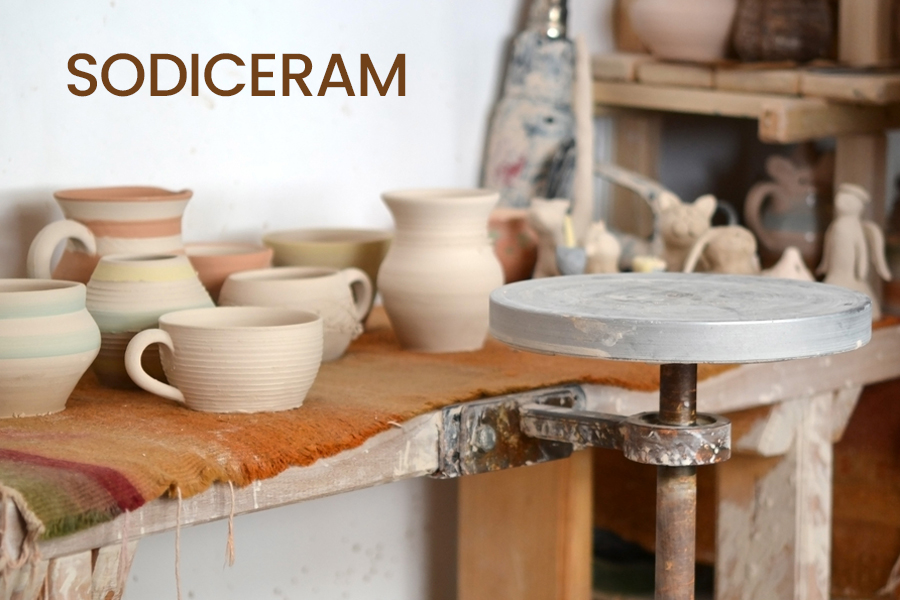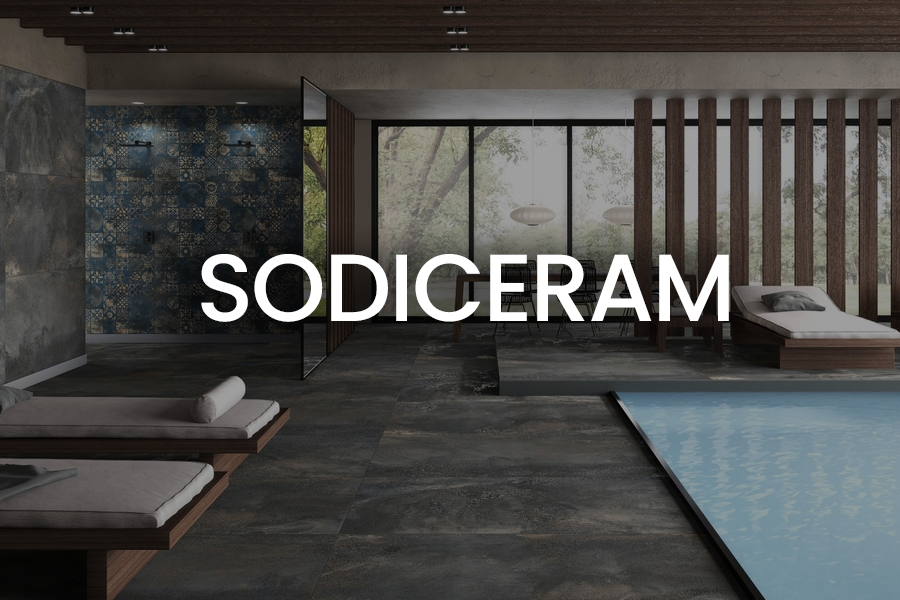Ceramic materials have long been admired for their durability and timeless beauty. But in today’s rapidly evolving design and construction industry, Sodiceram is taking that legacy a step further—redefining ceramics through high-tech innovation, aesthetics, and sustainability.
Whether it’s being used in architecture, interior design, or healthcare environments, Sodiceram is gaining attention as more than just a tile or surface—it’s a design solution for the future.
What is Sodiceram?
Sodiceram is not your average ceramic material. It’s a cutting-edge innovation that combines traditional ceramic craftsmanship with modern engineering—specifically, it integrates sodium-based compounds to create a new class of advanced ceramics. Unlike conventional ceramics that may be brittle or limited in application, Sodiceram is engineered for durability, flexibility, and performance, making it ideal for modern architecture, industrial applications, and design-forward interiors.
The Rise of Sodiceram in Modern Design and Architecture
As construction and interior design industries evolve, so does the demand for high-performance materials. Sodiceram has gained popularity thanks to its adaptability and visual appeal. From textured walls in urban apartments to sleek facades in commercial buildings, this material is becoming the go-to for professionals looking for performance without compromising style.
Its textured ceramic panel options not only look visually striking but also bring depth and dimension to a space. Designers and architects appreciate how these panels create a high-end, sophisticated aesthetic with long-term durability.
Technical Superiority and Unique Features of Sodiceram

The defining strength of Sodiceram lies in its unique formulation. It includes a blend of minerals and sodium-infused ceramic compounds, giving it a distinct advantage over traditional materials. Here’s how:
- Eco-friendly ceramic material: Made with sustainability in mind, it reduces waste during production and supports green building certifications.
- Hygienic ceramic material: Its non-porous surface resists bacterial growth and makes cleaning easier, especially in spaces like kitchens and bathrooms.
- Thermal shock-resistant tile: With the ability to withstand rapid temperature changes, it’s perfect for environments prone to heat stress.
- Bathroom-friendly tile: Moisture-resistant and slip-proof finishes make it ideal for wet areas.
- Ceramic cladding material: Excellent for exterior facades, ensuring long-term performance against environmental factors.
- Technical ceramic specifications: Precisely engineered for uniformity, strength, and resistance to wear and tear.
Use Cases and Versatile Applications of Sodiceram

1. Home Interiors and Decor
Whether used in flooring, walls, or countertops, sodiceram has quickly become the go-to choice for designers seeking a mix of visual warmth and functional resilience. As a bathroom-friendly tile, its anti-slip surfaces and stain-resistant finish make it a top pick for shower areas and splash zones.
2. Commercial Spaces
Restaurants, hospitals, and office buildings demand materials that can handle traffic, spills, and frequent cleaning. Sodiceram, with its hygienic ceramic material traits, becomes the obvious solution. From lobbies to medical suites, its clean design supports health and aesthetics.
3. Outdoor and Architectural Facades
Its utility as a ceramic cladding material gives architects more freedom to experiment with structure and form. Available in large slabs and custom panels, it can cover massive vertical spaces with ease—providing thermal insulation, water resistance, and elegant appeal.
4. Industrial and Technical Use
Thanks to its adherence to technical ceramic specifications, sodiceram finds applications in industries that require robust materials. These may include aerospace, electronics, and laboratory environments where strength and stability are paramount.
How Sodiceram Enhances Interior Spaces?
The beauty of Sodiceram isn’t just in its strength—it’s also in its versatility. Whether used for flooring, wall panels, countertops, or even custom décor pieces, it adapts to various aesthetics, from ultra-modern to rustic chic.
Textured ceramic panel installations, for instance, can elevate minimalist spaces with a tactile, visual appeal. Designers frequently use bathroom-friendly tile variants in high-end washrooms, thanks to their combination of form and function.
Why Choose Sodiceram Over Other Materials?
Still wondering what makes Sodiceram the smarter option? Here’s a quick breakdown:
- It merges strength and aesthetics.
- It’s suitable for both residential and commercial use.
- It meets sustainability goals.
- It’s long-lasting and easy to maintain.
- It complies with technical ceramic specifications for demanding applications.
All of this makes it a front-runner in the evolution of ceramics.
Comparing Sodiceram to Traditional Ceramics
Traditional ceramics have long been a staple in construction and design. But Sodiceram offers notable upgrades:
| Feature | Traditional Ceramic | Sodiceram |
|---|---|---|
| Durability | Moderate | High (thanks to sodium compounds) |
| Hygiene | Varies | Consistently high as hygienic ceramic material |
| Sustainability | Depends on type | Strong eco-friendly ceramic material credentials |
| Thermal Resistance | Moderate | High (thermal shock-resistant tile) |
| Application | Limited | Widely versatile from facades to wet rooms |
This comparison reveals that Sodiceram is not just a substitute—it’s an enhancement. Sodiceram also stands out for its premium ceramic cladding material, which delivers a sleek, modern appearance while supporting structural integrity in large architectural builds. This material isn’t just visually appealing—it’s engineered to perform under pressure.
Maintaining and Caring for Sodiceram Surfaces
Another major advantage of Sodiceram is its low-maintenance nature. Here’s how you can care for it:
- Regular cleaning with mild detergent.
- Avoid using acidic chemicals.
- For textured ceramic panel surfaces, use a soft brush to remove trapped dirt.
- Reseal (if applicable) based on product specifications.
Its resistance to staining and wear also means it retains its original finish for years.
Future Innovations and Market Outlook of Sodiceram
Sodiceram is not just redefining ceramics today—it’s shaping the future of the industry. With ongoing research and development, the next wave of sodium-based ceramic solutions is expected to be smarter, lighter, and more efficient.
What’s Next for Sodiceram?
- Smart features like built-in sensors for moisture or heat detection are being explored.
- New lightweight Sodiceram formulations aim to ease handling without compromising strength.
- Advances in energy-efficient manufacturing are boosting its status as an eco-friendly ceramic material.
- Enhanced surface coatings may soon offer self-cleaning, anti-slip, and UV-resistant capabilities.
Design & Market Trends
Designers are embracing Sodiceram for its textured finishes, modern aesthetics, and technical strength. As demand for hygienic ceramic material and thermal shock-resistant tile grows, Sodiceram is gaining traction across Europe, Asia, and the Middle East.
Strong Market Outlook
With sustainability and durability top of mind, the global market is moving toward technical ceramic specifications—and Sodiceram fits right in. Growth is expected across residential, commercial, and industrial sectors.
Final Words
Sodiceram isn’t just manufacturing tiles—it’s shaping the future of ceramic application. By combining advanced materials like sodium-infused ceramic with thoughtful design elements such as textured ceramic panel and supporting health-focused innovations like hygienic ceramic material, the brand offers complete solutions that work across industries.
Whether you’re designing a high-end hotel, modern residence, or public healthcare facility, Sodiceram ensures you won’t have to choose between function and elegance.
Don’t miss out on any news—keep in touch for real-time information visit: Discover Heading!

